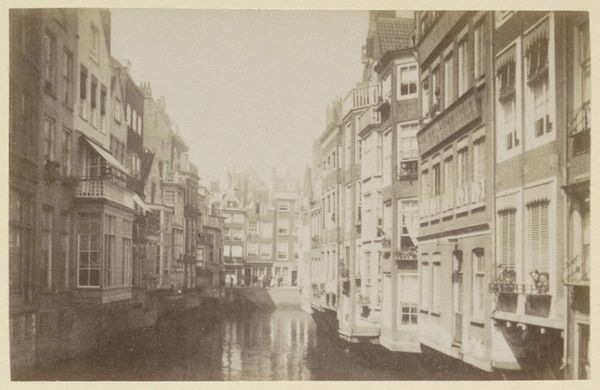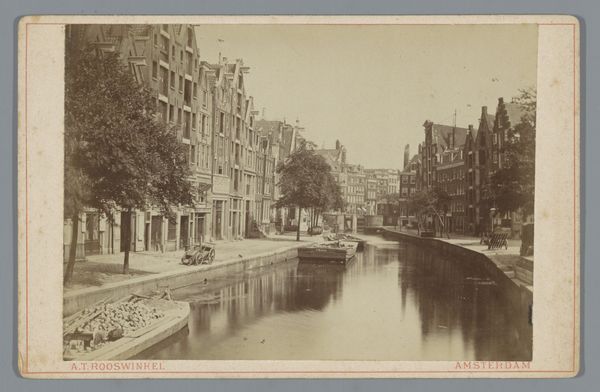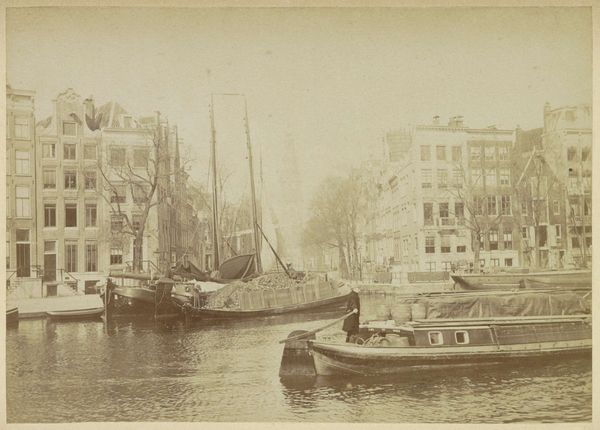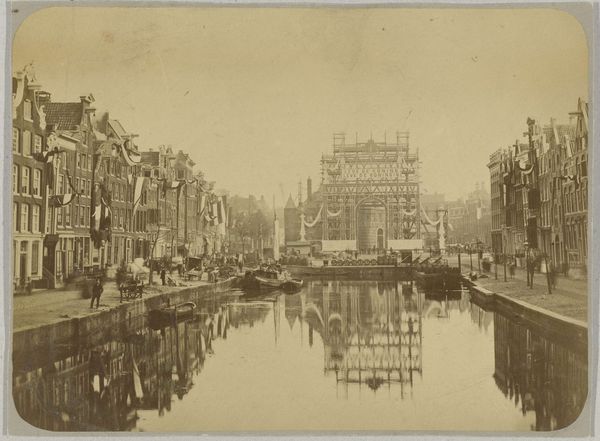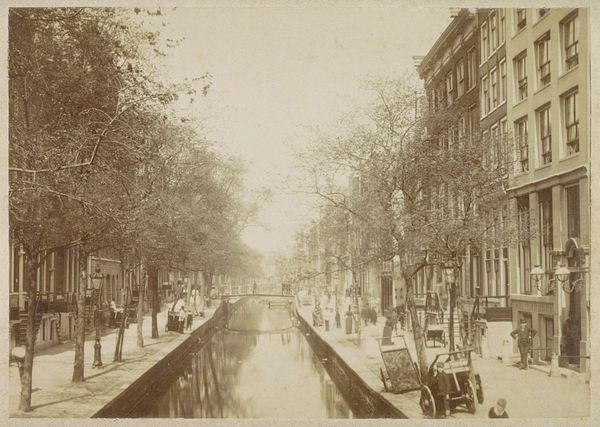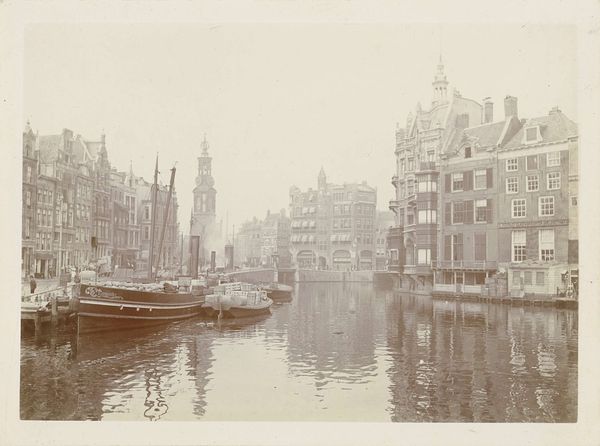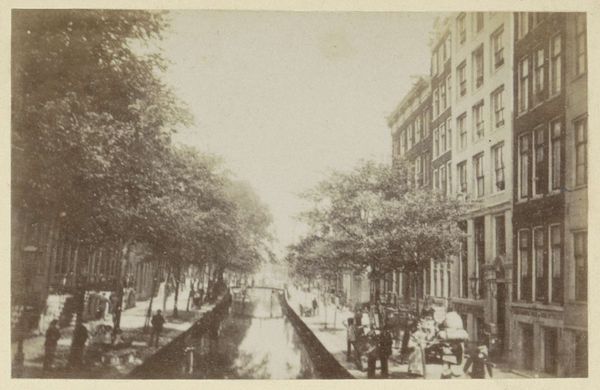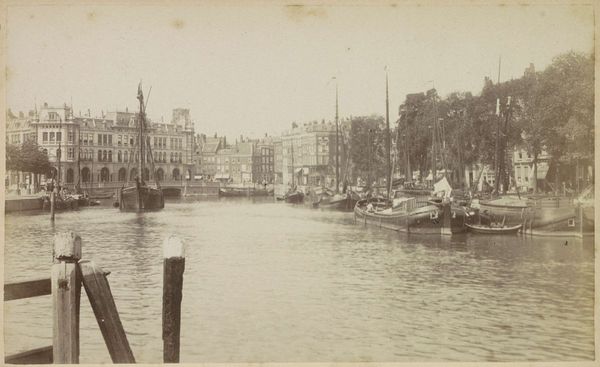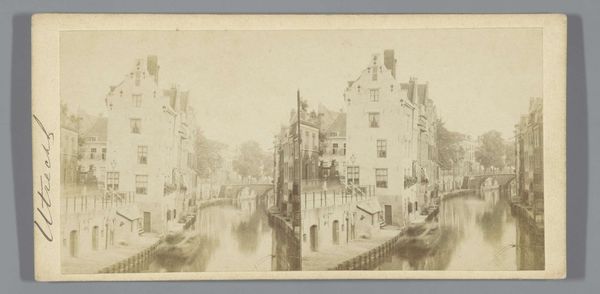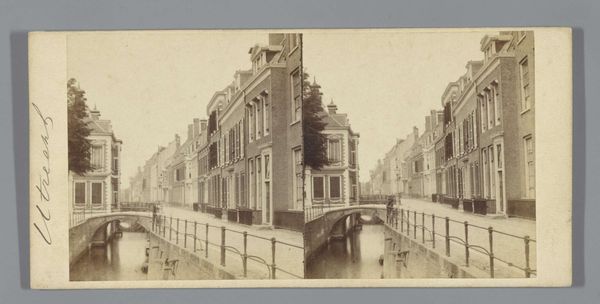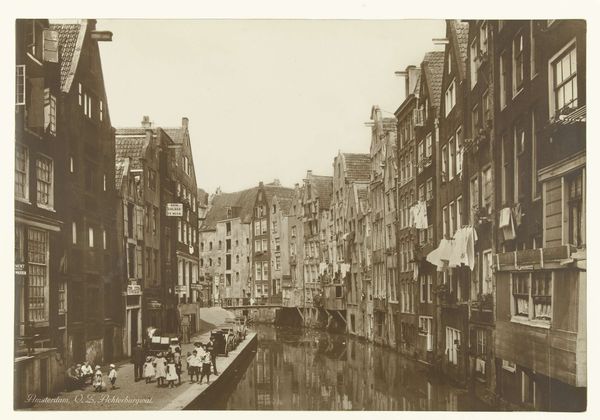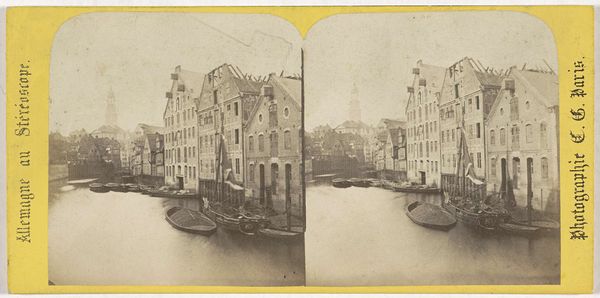
Gezicht op de Oudezijds Kolk en de toren van de Oude Kerk c. 1860 - 1900
0:00
0:00
photography
#
dutch-golden-age
#
photography
#
cityscape
#
realism
Dimensions: height 95 mm, width 135 mm
Copyright: Rijks Museum: Open Domain
Editor: This photograph, dating from around 1860 to 1900, captures a view of the Oudezijds Kolk and the Oude Kerk tower in Amsterdam. It’s a stunningly realistic cityscape. What’s your interpretation of the scene, thinking about its construction? Curator: What intrigues me most is the intersection of technological advancement and urban development evident here. The photographic process itself—the chemicals, the labor involved in creating such an image at this time—it's easy to overlook, but consider the resources invested in creating what seems like a straightforward depiction. It becomes evidence of a rapidly industrializing society. What does the perspective, a sort of organized vista, convey to you? Editor: It feels like it tries to capture the 'real' Amsterdam in a way painting couldn't. I guess it also says something about access, that photography made this perspective, this view, available to a wider public. Curator: Precisely. Think about the social implications of photographic reproduction versus hand-painted cityscapes. This photo democratizes the image of Amsterdam, potentially contributing to its burgeoning tourism. The reproducibility granted by photography allows for widespread dissemination, transforming urban spaces into commodities. Who benefits from this enhanced visibility and what is the lived reality of these citizens who would experience change? Editor: So it’s not just a pretty picture. It’s part of a larger economic shift! Curator: Exactly! It embodies the changing dynamics of labor and leisure. And where do you think those reflections come from, or who disposes of that refuse reflected there, as this canal becomes the subject of artistic production and a site of leisure? Editor: That gives me a lot to consider. Seeing it as a material object and considering its means of production shifts the whole perspective. Curator: Indeed, it’s more than just what’s depicted, it's about how and why. Hopefully next time we can talk about that water and the new infrastructures arising.
Comments
No comments
Be the first to comment and join the conversation on the ultimate creative platform.
